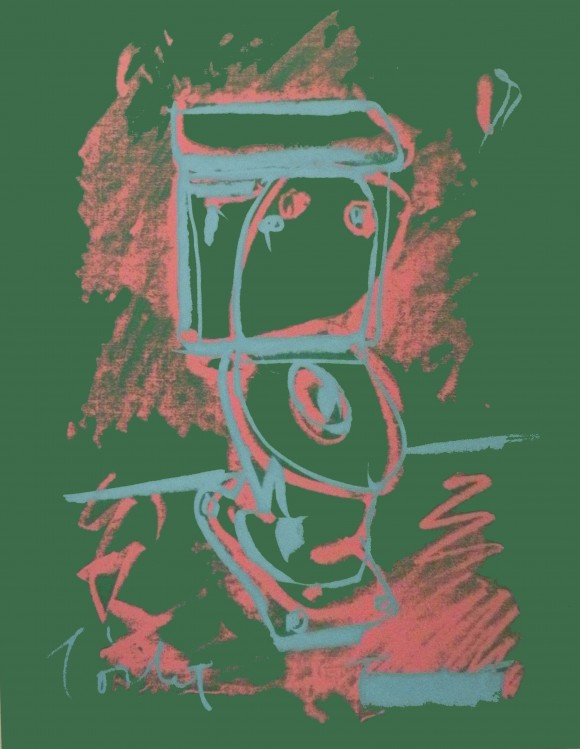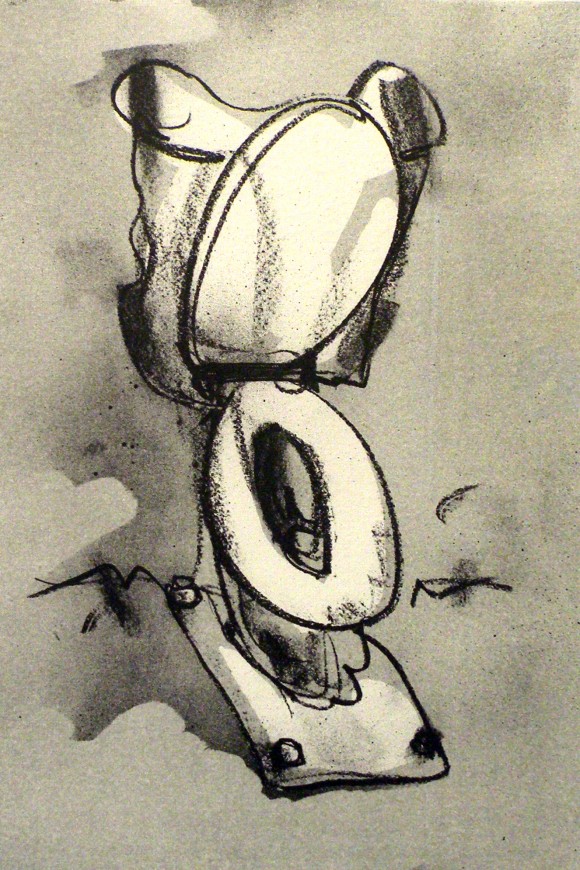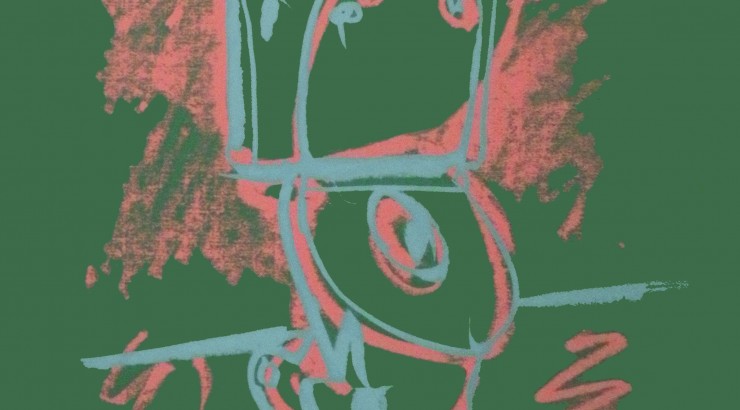Adventures in Plumbing
December 4, 2014
“I am for an art that takes its form from the lines of life itself, that twists and extends and accumulates and spits and drips, and is heavy and coarse and blunt and sweet and stupid as life itself.” – Claes Oldenburg

Claes Oldenburg
Soft Toilet #3 on Chalk Board, 1972
Screen Print, 30 x 22.5″
Gift of the Steinmetz Family, 2001
Claes Oldenburg (b. 1929) is a Swedish pop artist, most well known for large public sculptures that celebrate ordinary household objects. The Escalette Collection is home to two of his prints, a lithograph, Soft Toilet #1, and a screen print, Soft Toilet #3 on Chalk Board, both from 1972.
The relation between these two prints and the majority of his body of work is strange, since Oldenburg isn’t as well-known for his sketches as he is for his sculptures. In fact, the two Soft Toilet prints were made after some of his most famous works.

Claes Oldenburg
Soft Toilet #1, 1972
Lithograph, 21 x 15.5″
Gift of the Steinmetz Family, 2001
The Store (1961) was incredibly groundbreaking in the world of pop art. Oldenburg rented a cheap storefront in the Lower East Side of New York City, filling the space with crudely constructed interpretations of everyday objects, from clothing to cigarettes to various foods, all on sale, all made of materials like plaster and chicken wire. The presentation was somewhat of an artistic experiment, and was unique in that it was exhibited not in a gallery, but rather as an actual store.
Oldenburg held a solo exhibition in 1962 of soft sculptures, presenting some of his most recognizable works: Floor Burger, Floor Cake, and Floor Cone. He took these contemporary American cultural objects and replicated them in a monumental scale using fabric. This made them “soft,” challenging the traditional idea that sculpture is rigid.
His Soft Toilet sculpture of 1966 continues this idea. The sculpture is made of vinyl, making it limp and floppy. He took the idea of a porcelain toilet, something that is familiar to everyone, and by making it into a soft, drooping sculpture, made it completely unusable in the traditional sense.
This brings us back to the two Soft Toilet prints in the Escalette Collection. These were made in 1972, six years after his initial sculpture, and continue the same ideas of the deconstruction of the ordinary household object. After understanding the concept behind his work, especially his soft sculptures, these two prints come off not as simple sketches, but as two-dimensional representations of the same goals expressed in his other works.


